Find redemption on your yoga mat
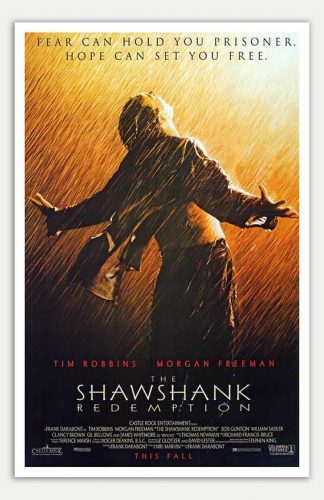
When the coronavirus arrived in New York early this year, we, like Andy Dufresne in the 1994 film The Shawshank Redemption, began a painstaking, maddening, life-changing trek, breaking through concrete-wall obstacles stained with tears. It would be over soon, some said; it was just another flu, said others. But there was seemingly no end to the pandemic prison at the tunnel’s end, only more obstacles and challenges.
Portrayed by Tim Robbins in the film version of the Stephen King novella Rita Hayworth and The Shawshank Redemption, Andy Dufresne is wrongly imprisoned for murders that he did not commit. Thwarted in his attempts to clear his name and win his freedom, he forms a painstaking, years-long escape plan that starts with chipping away his concrete cell wall–piece by small piece with a black market rock hammer (“a miniature pickaxe,” Andy tells his friend and confidante “Red” Redding, played by Morgan Freeman in the film)–to make a hole just big enough to squeeze through, and culminates with a torturous crawl through a stench-filled sewer pipe.
We, like Andy, have clawed our way through a tunnel of muck. Since we were sentenced to pandemic prison, we have battled fear, isolation, job loss, and illness, armed against a faceless enemy with the flimsiest of tools: cloth masks and rubber gloves. The doors of schools, places of worship, and businesses were shuttered. Many of us have lost family members, friends, or coworkers, or experienced illness or hospitalization ourselves. (Even so, thank God Covid-19 is not as deadly as it is contagious, or we’d be facing down the dawn of an extinction event right now.)
“Andy had gone into that pipe. . . . Five hundred yards. The length of five football fields. Just shy of half a mile. He crawled that distance, maybe with one of those small pen lights in his hand, maybe with nothing but a couple of books of matches. He crawled through foulness that I either can’t imagine or don’t want to imagine.”
-from Rita Hayworth and The Shawshank Redemption, by Stephen King
Now, more than five months after the statewide New York lockdown was initiated, here we stand. Slowly, painstakingly, we are reclaiming our lives. We work if we can, shop when we need to, and worship via Zoom. Students took winter, spring, and now summer classes on line. And the American heroes—our healthcare workers, essential workers, and first responders—continue to support us and save lives.
More possibilities are available now than back in March. With precautions in place, we can go to restaurants and hair salons. As of this writing (in mid-August), many students are expected to return to school classrooms in September, and churches will hold in-person services–again, with precautions in place. But it’s definitely not the life we had before, and may not be for a long time.
Meanwhile, we yogis continue to do what yogis do best. Stand strong, on our mats, in Tadasana (mountain pose). Rise up and balance in Vrksasana (tree pose). Take the graceful form of warriors in the Virabhadrasana poses, strengthening muscle and bone while cultivating inner peace. And ending our yoga practices in Savasana, or deep relaxation, to help reprogram our nervous system to a soothing setting.
In winter and spring, we practiced on our own in cramped bedrooms, watched yoga videos on line, and took classes via online platforms like Zoom. And because we New Yorkers played nice and wore our masks, we can now enjoy outdoor yoga in the warm summer sun—through our local yoga studio (with proper social distancing, of course) or privately on our patios or decks, if we’re lucky enough to have them. I wouldn’t say so far, so good; more like so far, good enough–for now.
“. . . . Andy Dufresne who had waded in shit and came out clean on the other side, Andy Dufresne, headed for the Pacific.”
-from Rita Hayworth and The Shawshank Redemption, by Stephen King
Yogis may look gentle on the outside, but our hearts, bodies, and voices are strong. We are hammering away at the pandemic prison walls, and we’re not going quietly. “We are here!” I reminded my students in a recent Tuesday evening Zoom class. We’ve survived six sad, hard months of pandemic pressure, knowing that more challenging and probably stinky months lie ahead.
We are here! We are here! We are here! Shout it loud and proud to whoever is listening, including the skeptics and pearl clutchers, as the wee Whos did in Dr. Seuss’s classic tale Horton Hears a Who! Most of all, shout it to yourself. Be proud of your determination, resilience, and strength, even on the days when you feel like crap. It’s normal to feel sad, scared, anxious, or depressed during life-changing, stressful times. But please don’t lock yourself in a mental pandemic prison of isolation and negativity. (I am not unfamiliar with this kind of cage; I have battled depression for most of my life.)
- Take care of your emotional health and your body
- Stay in touch with those you love and trust
- Get outside for fresh air; if you can’t poke your head out of a window
- Eat well and get some exercise
- Make time for a good night’s sleep
- Listen to and focus on the sounds of summer–bird songs and peeps, cricket chirps, and cicada crackles– especially if you need to spend most of your time indoors
- Consider lessening or avoiding alcohol consumption at this time
- Get in touch with a trusted healthcare provider if symptoms like anxiety and depression persist
Remember, yogis don’t build prison walls; like Andy Dufresne at the fictional Shawshank State Prison, we forge a pathway to lead us out of our cage, to freedom.




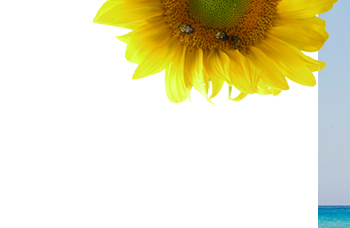

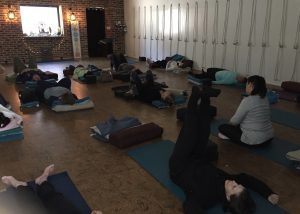
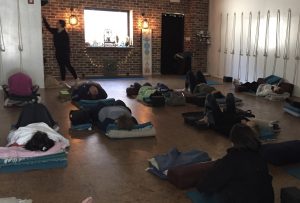 the classroom is usually best!) I’ve seen students reading on the mat before class; others fall asleep.
the classroom is usually best!) I’ve seen students reading on the mat before class; others fall asleep.

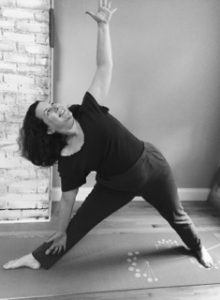
 raining, it must be Tuesday, because rain showers and gray skies seem to favor our practice time. I recently reminded my students that there are many delightful shades of gray that are not the least bit dreary. The vast
raining, it must be Tuesday, because rain showers and gray skies seem to favor our practice time. I recently reminded my students that there are many delightful shades of gray that are not the least bit dreary. The vast  Selene, the sweetest cat I have ever known, is fur-coated in her own personalized shade, Loving Kitty Gray. We named Selene after the Greek goddess of the moon (hence all those e’s) when we adopted her because our son Harrison (then eleven years old) said that the irregular pattern of her silky gray and white fur reminded him of the dimpled silvery surface of the moon. (Her full name is Selene Moonbeam.) Selene is shown at right in one of her favorite yoga poses, Donut-Shaped Kitty Savasana. She is an expert at it!
Selene, the sweetest cat I have ever known, is fur-coated in her own personalized shade, Loving Kitty Gray. We named Selene after the Greek goddess of the moon (hence all those e’s) when we adopted her because our son Harrison (then eleven years old) said that the irregular pattern of her silky gray and white fur reminded him of the dimpled silvery surface of the moon. (Her full name is Selene Moonbeam.) Selene is shown at right in one of her favorite yoga poses, Donut-Shaped Kitty Savasana. She is an expert at it!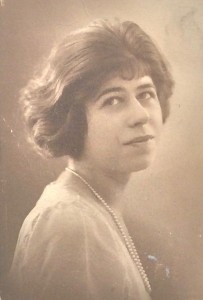
 decorations out of felt that she embellished with sequins and fancy stitches.
decorations out of felt that she embellished with sequins and fancy stitches. 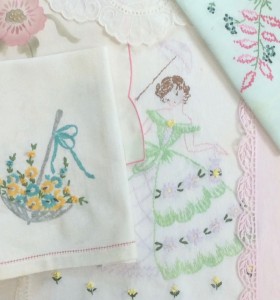
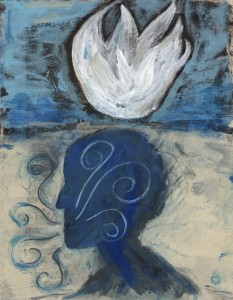
 reduction (MBSR). On the same day as that painful goodbye, the MBSR class focused on coping with stress encountered during clinical practice. During a meditation segment, the instructor asked the medical students to talk about a difficult time they’d had with a patient. While her classmates shared their experiences, Dr. Levin struggled to relax and breathe. She was losing her focus, her presence in the moment, and she dreaded sharing her experience with her colleagues.
reduction (MBSR). On the same day as that painful goodbye, the MBSR class focused on coping with stress encountered during clinical practice. During a meditation segment, the instructor asked the medical students to talk about a difficult time they’d had with a patient. While her classmates shared their experiences, Dr. Levin struggled to relax and breathe. She was losing her focus, her presence in the moment, and she dreaded sharing her experience with her colleagues.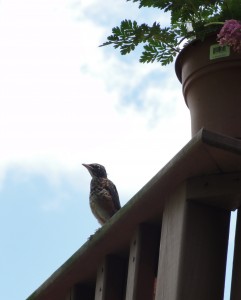
 boards to see them) to the first appearance of a pointy, gaping beak eager for food, we observed the birds whenever we could. It was a privilege, really, to see their story unfold.
boards to see them) to the first appearance of a pointy, gaping beak eager for food, we observed the birds whenever we could. It was a privilege, really, to see their story unfold.
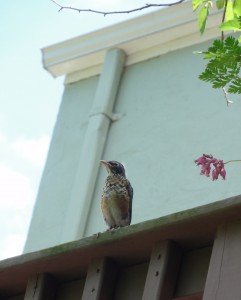

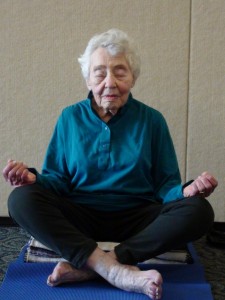
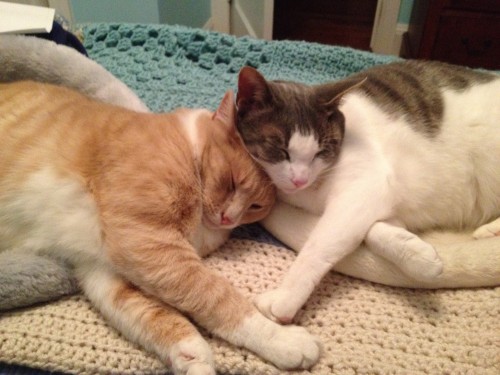
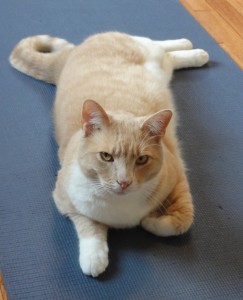 from the balance of movement and stillness. We regularly hear about the importance of physical fitness, but the benefits of mental stillness are not as widely touted. Studies have suggested that yoga, particularly the practice’s breathing, meditative, and restorative aspects, can help support our emotional well-being in many ways:
from the balance of movement and stillness. We regularly hear about the importance of physical fitness, but the benefits of mental stillness are not as widely touted. Studies have suggested that yoga, particularly the practice’s breathing, meditative, and restorative aspects, can help support our emotional well-being in many ways: 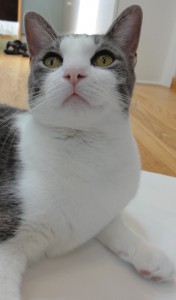 (Memo to self: shift to lower gear when driving down Leewood Drive in a snowstorm.) The fear I felt during the event fresh in my mind, I unknowingly tensed my body. A loud hiss from Selene, followed by a sharp-toothed nip, brought me back to the moment.
(Memo to self: shift to lower gear when driving down Leewood Drive in a snowstorm.) The fear I felt during the event fresh in my mind, I unknowingly tensed my body. A loud hiss from Selene, followed by a sharp-toothed nip, brought me back to the moment.